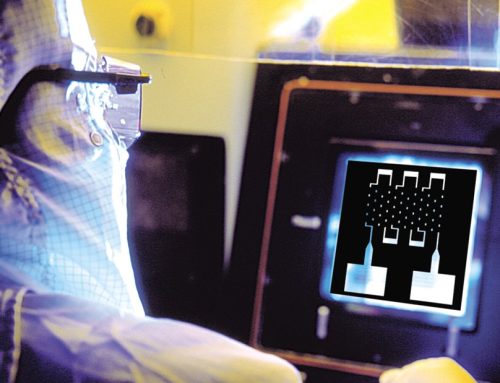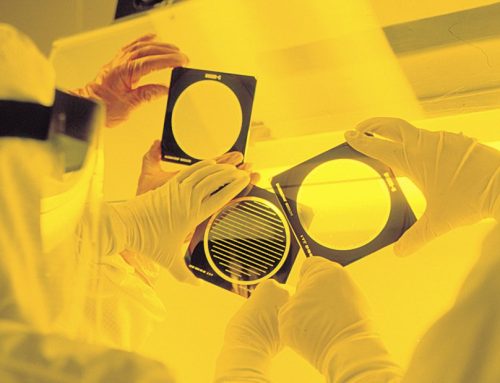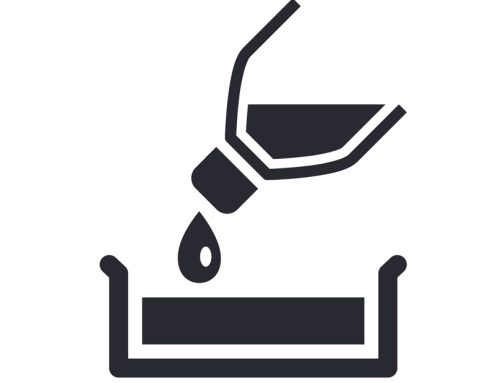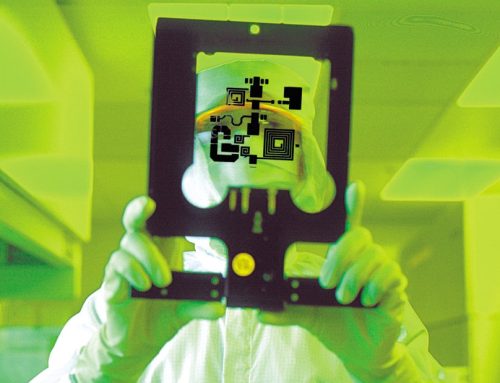HARD DEFECTS
A hard defect is any flaw affecting the photomask mask, other than contamination. One class of defects includes the presence of metallized coating where it should not be (spots, extensions, bridging between geometry) or unwanted clear areas (pin holes, clear extensions, clear breaks). Such defects can cause the circuit not to function properly.
Locally adding opaque material or removing excess chrome with a laser beam or focused ion-beam can repair many defects.
Defect specifications are usually expressed in one of several ways.
First, the designer / end user must communicate what size a defect must be in order for it to be counted as a defect.
Secondly, the designer / end user must communicate how many defects in a given area are acceptable.
Finally, the designer / end user should indicate what size a defect must be in order for it to constitute a catastrophic defect, the presence of which even a single occurrence defects the entire photomask.
The following are some examples of how a defect specification might be stated: Example 1 – Defect size = 1.0, allow 3 per square inch, zero greater than 15.0 Example 2 – Defect size = 1.0, allow 2 per square millimeter, zero greater than 15.0 Example 3 – Zero defects greater than 5.0
Hard defects can be detected one of the following methods:
- Microscope Inspection: an operator manually inspects the mask on a microscope using a high power (50 to 200 times) magnification.
- Auto-inspection: auto inspection tools are used to inspect the photomask for hard defects using sophisticated image processing routines. Most photomask manufacturers are equipped with sophisticated inspection and defect repair equipment. Today, it is fully possible to produce photomasks with zero defects over a stated size as long as the maskmaker is permitted to repair defects. A specification such as Example 3 (above) is increasingly popular with designers / end users because it assures them that the photomask they receive will be virtually perfect.
SOFT DEFECTS
Soft defects include dust, particulates and residual photo resist. Contaminants can be the result of:
- Airborne particulates that settle on the surface of the photomask.
– Particulates present in the wet process – develop / etch / stripping / washing segments of the process that are not fully removed. - Improper handling, such as touching the surface of the photomask or not wearing proper cleanroom garments.
- Improper clean room protocols.
Soft defects should never be present on the photomask when it is received by the end user. Modern day maskmakers have sophisticated cleaning and inspection equipment, and adhere to rigid cleanroom standards so as to insure that photomasks are free of all soft defects prior to packaging and shipment.
Soft defects can be detected using several methods:
- Gross Light Inspection: the mask is inspected under a high intensity light for gross contamination (contamination that can be seen with the naked eye).
- Microscope Inspection: an operator manually inspects the mask on a microscope using a high power (50 to 200 times) magnification.
- Auto-inspection: auto inspection tools are used to inspect the photomask for soft defects using sophisticated image processing routines.
COSMETIC DEFECTS
Cosmetic defects are imperfections in the photomask, the presence of which does not necessarily effect the functionality of the circuit, but which the designer / end user may determine are unacceptable.
Cosmetic defects can include:
- Surface scratches, which don’t break through the chrome coating, but are visible when viewed through a microscope using reflected illumination).
- Stains that don’t affect light transmission.
- Hard defects outside of the pattern area.
- Imperfections to the glass substrate such as glass chips on the edges of the photomask.
- Defects on the non-mettalized surface (glass side), which will not be printed to the end user’s substrate because the focal distance is too great to achieve resolution.
Most photomask manufacturers have internal standards, which will not allow photomasks with cosmetic defects to leave their facilities. However, if a designer / end user is particularly sensitive to a certain type of cosmetic defect they should communicate it to the mask-maker so that the mask-maker will take the appropriate precautions to insure that this type of defect is not present on the finished photomask.

Examples of typical defects.
Pellicles (metal frames with a protective membrane) can be attached to the masks to keep them clean.







